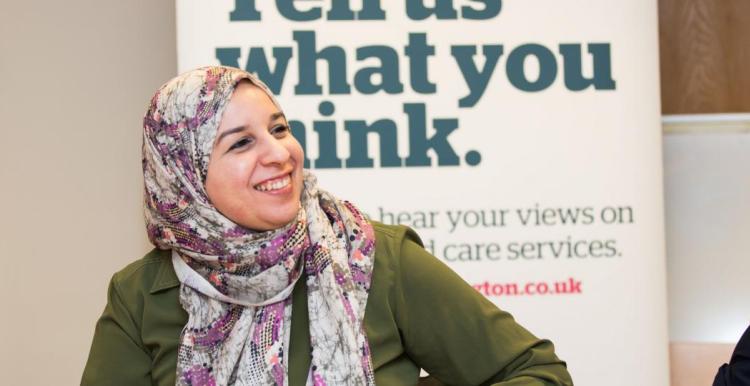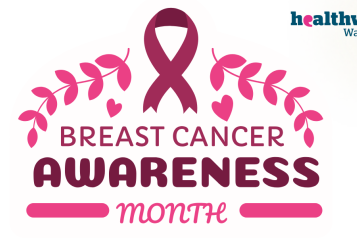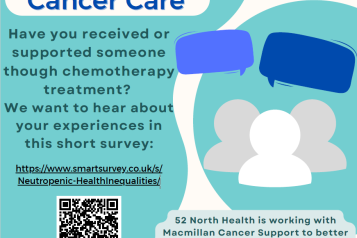Improving take-up of cervical screening amongst Asian communities in Wandsworth

Introduction
On Wednesday the 7th of February 2024 we attended a workshop around the topic of improving take-up of cervical screening amongst Asian communities in Wandsworth.
The workshop, part of a two-year Connecting Health Communities (CHC) support package, was delivered by The Institute for Voluntary Action Research (IVAR). While we there as participants and observers we had also played a role in organising the event and contributed to the project as part of the steering group.
The specific focus of this workshop, cervical screening amongst Asian communities, was due to cancer screening data showing Wandsworth having some of the lowest cervical screening coverage in London and England, particularly amongst Asian communities.
As a result, the workshop aimed to bring together local residents, voluntary community and social enterprises (VCSE) and health and public sector representatives. The workshop ran from 9.30am-12.30pm and had about 30 attendees with local residents, mainly represented by the women of Mushkil Asan, joining for the second half of the workshop.
Workshop
The workshop began with introductions and an explanation of the CHC program. Delivered by IVAR, areas across England are chosen to be funded for 18 months in order to enable cross-sector partnerships that will address health inequalities and improve collaboration within the community. The Borough of Wandsworth was chosen at the beginning of 2023 following a successful local multi-agency bid. Health inequalities in the borough were then looked at and cervical screening up-take was selected as the focus for the work.
We were then told that the emphasis at this stage of CHC program is to bring in community perspectives and experiences in order to address the low take-up of cervical screening amongst Asian communities in Wandsworth. As a result, the workshop was to divided into three main discussions. The first was to share positive experiences of healthcare within the borough. This was then followed by an open discussion about what we saw as the barriers for increasing take-up of cervical screening amongst Asian communities and what could be the possible solutions.
Steering Group Presentations
Before participants began table discussions, members of the steering group took some time to give presentations relevant to the work being carried out. These included a presentation from the Public Health & Integrated Care Board on Why cervical screening and why now?, a presentation from West London Cancer Alliance on What does the data show us?, and a presentation from ourselves, Wandsworth Care Alliance, on The importance of working in partnership with the community.
Positive Healthcare Experiences
The first part of the workshop, sharing positive experiences of healthcare, mainly involved VCSE and health and public sector representatives as local residents only joined later. The main themes that emerged from this discussion were that staff and professionals providing care and dignity towards patients was especially important. In addition, making sure that patients felt heard and could ask questions and have things explained to them was also raised as a key point. While this discussion was about healthcare experiences in general the idea was to bring up themes that may be relevant to cervical screening and what would help ensure it is a positive experience for patients.
Barriers
Prior to the second group discussion, centred around barriers preventing cervical screening take-up amongst Asian communities in Wandsworth, more individuals representative of the Asian community arrived to join us. It was incredibly important to engage with the community directly and making sure their voices are heard. Therefore, to have representatives of Mushkil Aasaan and the wider Asian community in Wandsworth for the discussions on barriers and solutions was essential to it being effective. Before we began the discussion public health representatives gave a short introduction to the female anatomy and the cervical screening process in order to make sure everyone was well informed on what we were discussing.
The discussion around barriers was probably the most beneficial and extensive. Participants were divided up into four tables with approximately 9/10 on each. The organisers ensured that each group had community representatives and members of the VCSE/health and public sector, as well as ensuring that there was someone who on each table who was able to interpret between English and Urdu.
Below are the major barriers that were highlighted by the four group discussions.
Scheduling/access – the limitations of appointment times and the necessity to go to a clinic to have the screening was raised by many as an issue due to caring and family commitments. The location of clinics was also an issue especially in the current cost of living crisis due to the fact that it takes time and money to reach them.
Language – various issues around information not being provided in languages other than English was raised as a barrier to increasing take-up. It was also noted that providing translated text may not solve the issue as there may also be a substantial number of people who are not literate. Issues of cultural awareness by healthcare professionals was also raised.
Lack of understanding/information – a frequent comment raised by members of the community was that there is a general lack of understanding around cervical cancer. For example, the misconception that you are not at risk if you’ve only had one sexual partner.
Stigma – a major theme was that going for cervical cancer screening has negative social connotations such as that the person must be promiscuous. Furthermore, if one was to be seen attending a screening it would lead to questions and discussion from other community members.
Fear – many participants noted that it was common in South Asian culture to simply ignore health concerns until symptoms emerged, at which stage it can often be more difficult to treat. In addition, in relation to cervical screening there were concerns that the test would be done by a male healthcare professional or that the procedure would be painful.
Solutions
In conjunction with the discussion on barriers each group also attempted to raise possible solutions for each issue.
Below are the major possible solutions that were raised by the four groups.
Communication – a variety of ideas were raised regarding increasing effective communication with the community. These included providing visual information, translated texts and letters, and providing culturally appropriate case studies to increase relatability.
Time – participants raised the idea of increasing the availability and variety of appointments. Emphasising that evenings are not always the best option and that many Asian women have caring responsibilities outside of school hours.
Outreach –to combat the lack of awareness/ information around cervical cancer screening the groups came up with a variety of ideas. These included providing workshops for various age groups and making sure they are accessible and multilingual, using community representatives to help spread awareness, and creating community outreach in places considered safe spaces for the target audience.
Service provision – comments were mainly around making the idea of attending a cervical cancer screening more comfortable, as well as increasing knowledge of its importance. Ways to achieve this were highlighted as ensuring people know female healthcare professional are carrying out the screening and that healthcare professionals are trained to provide adequate culturally sensitive explanations and support.
What next?
Following the group discussions we reconvened to reflect on what next steps would be taken by IVAR as part of the CHC support package. The steering group first stressed that this is the first of a series of discussions to be had during 2024 with community members. They also acknowledged that these discussions need to be taking place within the communities and actively going to their meeting places to hold workshops.
Overall, the workshop was enlightening and made sure that the voices of the community were heard in regard to tackling the barriers to cervical cancer screening take-up and creating possible solutions. We look forward to being active in the next steps of the project and seeing the positive impact it can make.


